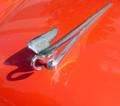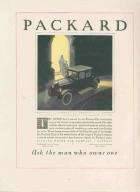|
Re: Sanding Car ready for Paint
|
||||
|---|---|---|---|---|
|
Home away from home

|
STOP! DO NOT follow this advice of how to sand a car. I worked in garages and body shops for 20 years and I guarantee you, not only will you ruin your car you will make it ten times as hard for the body shop to fix it, than if you do nothing.
I wish I had time to tell you how to do this but it is harder than you think. Before you do anything go to the library and see if you can find some good books on bodywork and painting. PS most books skip over the basics and assume you already know the simple stuff but it is not so simple when you have never done it.
Posted on: 2010/12/23 22:17
|
|||
|
||||
|
Re: Sanding Car ready for Paint
|
||||
|---|---|---|---|---|
|
Home away from home

|
Basically you have to wash the car first. Then degrease with wax and grease remover if there is any danger of wax or oil being on the car. Then sand the whole thing by hand with 320 wet or dry paper. Tear the paper in half, fold the half sheet in 3 and tuck the corner between your thumb and forefinger, and sand with your hand held flat. Sand with the palm not the fingers or you will not get a flat surface.
When the car is all sanded tape it off and spray 3 thin wet coats of lacquer primer surfacer. Sand again with 100 or 120 sandpaper. Stop as soon as you go thru the primer in spots. Primer again, 3 thin wet coats. Sand with 320. Touch up minor scratches or chips with glazing putty or spot putty. Spot prime and finish sand. Now you are ready to paint. This ignores the whole question of body work, panel replacement, dent and rust repair. That takes place between the first sanding and the first primer coats and is a story all its own.
Posted on: 2010/12/23 22:23
|
|||
|
||||
|
Re: Sanding Car ready for Paint
|
||||
|---|---|---|---|---|
|
Home away from home

|
Oh WoW, thanks Rusty for putting us all right. EHow.com not so clever then! I have a pro here to paint, but by sanding yourself, save heeps of money. Def will follow your way Rusty.
Posted on: 2010/12/23 22:51
|
|||
|
||||
|
Re: Sanding Car ready for Paint
|
||||
|---|---|---|---|---|
|
Forum Ambassador
|
If there is one in your area, take the car to a shop that does
plastic or walnut shell media blasting (NOT sand blasting or glass bead!) and have the whole body media blasted, and while it is there, have it epoxy primered right away, immediately after being blasted. Best money we ever spent was having car bodies media blasted. Rattle cans are for patio furniture and graffiti and have no business around a car's body.
Posted on: 2010/12/23 23:51
|
|||
|
||||
|
Re: Sanding Car ready for Paint
|
||||
|---|---|---|---|---|
|
Home away from home

|
Check with your painter on what materials to use, how to do the job etc. Different brands of paint require different prep and they are coming up with new things all the time. For example lacquer primer surfacer went out of date 30 years ago for professional painters but it is what you get in spray bombs AND it is not too dangerous to use at home. Many of today's paints are very hazardous to health, working without protection is the next thing to visiting the gas chamber at Sing Sing. Even the old paints could cause serious lung damage over time, I found out the hard way.
Posted on: 2010/12/24 0:10
|
|||
|
||||
|
Re: Sanding Car ready for Paint
|
||||
|---|---|---|---|---|
|
Home away from home

|
Media blasting is very expensive and not necessary in most cases. The best primer and protection for your car, is the paint they applied at the factory. Strip a car to bare steel and it is MUCH harder to repaint not to mention an open invitation to rust.
Posted on: 2010/12/24 0:12
|
|||
|
||||
|
Re: Sanding Car ready for Paint
|
||||
|---|---|---|---|---|
|
Home away from home

|
Wow, interesting instructions for painting a car. They did leave out the details on how long you need to shake the rattle can, though.
 I'm not sure what ehow.com is, but their advice is worth what you paid for it. I'm not sure what ehow.com is, but their advice is worth what you paid for it.Rusty is right that the original finish is the best protection for the vehicle, but once you start layering body work and repaints on top of that original coat your best bet may be to return to bare steel and start fresh. That, of course, should mean that the repaint include all of the proper chemicals, from etching the bare steel to the final coat of color, and be applied in a professional manner with quality equipment. Do some research (forget the internet and find a book!)on body work as Rusty recommended and decide if such a visible part of the car's restoration is something you want to attempt. Then, get out in the garage, grab an old fender and practice, practice and practice some more. Evaluate your efforts and then decide if you want to try your skills on a car you care about. Remember though, there's nothing wrong with passing work on to a professional, especially something like auto body repair which is a skill that takes years to master.
Posted on: 2010/12/24 0:51
|
|||
|
||||
|
Re: Sanding Car ready for Paint
|
||||
|---|---|---|---|---|
|
Webmaster
|
I would be very leery about putting a modern paint system on top of old lacquer paint unless you are going for a "Wrinkle Finish".
Not all types of paint are compatible with one another. Some are ok over other types, but not the other way around. Unless you know that car is totally rust free, then I recommend taking it to bare metal, and then using a quality catalyzed primer. NEVER use a rattle can primer as they are not catalyzed and may end up lifting under the harsh chemicals used in some of todays paint systems. Rattle cans are great for painting things like air cleaners and bracketry, put not car bodies. I frankly would even stay away from traditional primers, and use a quality Epoxy primer as suggested by John (Mr. PB). Traditional primers are like a sponge and absorb moisture if left non-top coated. Epoxies do not suffer from that and provide excellent rust prevention. If you are serious about taking on this kind of work yourself, do yourself a favor an look into Auto-body classes that a local community college may offer. It is time and money well spent compared to making a costly mistake with body work that then has to be stripped and redone. Modern paint and primer is very expensive. A gallon of color matched urethane paint with the activator, and reducer can easily cost between $150-$200. A class which help you understand the basics of body work (hammer and dolly work), using fillers, differences between paint systems, mixing paints and primers with activators and reducers, and or course paint gun setup and spraying techniques.
Posted on: 2010/12/24 1:28
|
|||
|
-BigKev
1954 Packard Clipper Deluxe Touring Sedan -> Registry | Project Blog 1937 Packard 115-C Convertible Coupe -> Registry | Project Blog |
||||
|
||||
|
Re: Sanding Car ready for Paint
|
||||
|---|---|---|---|---|
|
Home away from home

|
This type of Epoxy primer ok?
eastwood.com/ew-epoxy-primer-gray-gallon-1-1.html Or perhaps this one? alsacorp.com/products/epoxyprimer/epoxyprimer.htm If the final coat is a lacquer, should a lacquer Primer be used ?
Posted on: 2010/12/24 5:41
|
|||
|
||||








